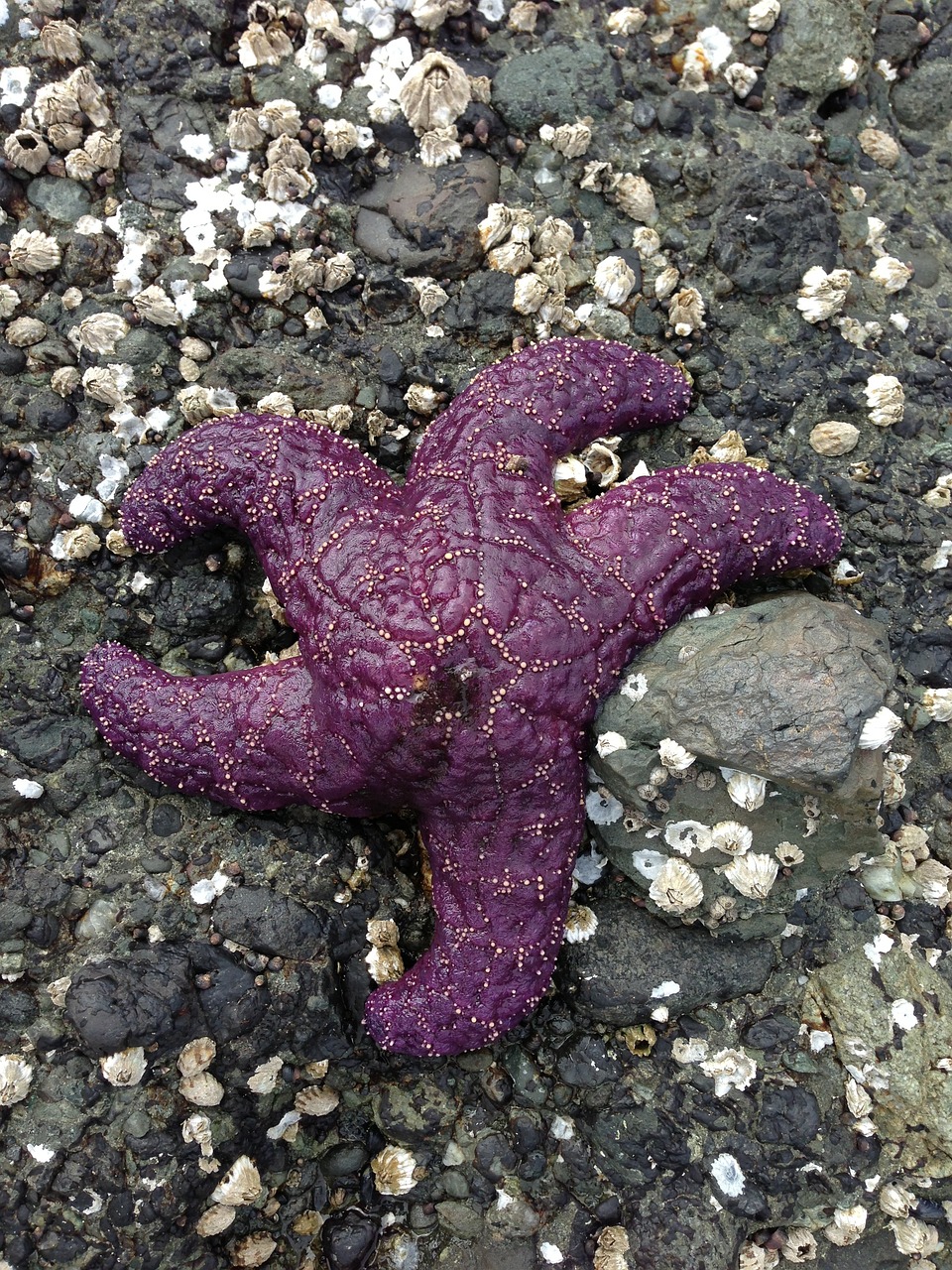Purple animals are relatively rare in nature. But animals that are purple add an undeniable pop of color to the natural world.
If you are looking for a list of purple animals, you are in the right place. I’ll share a summary list and then take a closer look at these purple beauties below.
Key Points:
- Some of my favorite purple animals include the Purple Gallinule and Purple Starfish.
20 Purple Animals: A Summary List
- Purple Emperor Butterfly
- Purple Gallinule
- Purple Swamphen
- Violet Sea Snail
- Purple Starling
- Orchid Mantis
- Purple Grenadier
- Purple Honeycreeper
- Ochre Starfish
- Violet-Crowned Woodnymph
- Magnificent Sea Anemone
- Spanish Shawl
- Sea Urchin
- Purple Shore Crab
- Twospined Angelfish
- Purple Martin
- Royal Gramma
- Costa’s Hummingbird
18 Purple Animals: A Closer Look
Ready to learn more about the purple animals included on our list? Dive into the details below.
Purple-Spined Sea Urchin

The Purple-Spined Sea Urchin (Arbacia punctulata) is a marine species found along the Atlantic coast of North America. Contrary to its name, the spines of this sea urchin can range from purple to red due to pigments in its tissues, including echinochrome. These pigments not only contribute to its distinctive coloration but also serve various physiological functions, including protection against ultraviolet (UV) radiation.
Purple Emperor Butterfly
The Purple Emperor Butterfly (Apatura iris) is a gorgeous insect with striking purple hues and captivating iridescence. This enchanting butterfly derives its purple coloration from microscopic scales on its wings that refract and reflect light, creating a dazzling display of colors. It lives in woodlands and forested areas across Europe and Asia, the Purple Emperor Butterfly.
Purple Gallinule
The Purple Gallinule (Porphyrio martinica) is a bird renowned for its vibrant and varied hues, which include shades of purple, blue, and red. The striking red coloration on its beak and frontal shield, as well as the purple tones on its body, result from pigments in its diet, such as carotenoids. These pigments are acquired through the consumption of various plants and invertebrates.
These birds are adept at navigating marshy habitats, where they are often found foraging for food.
Purple Swamphen
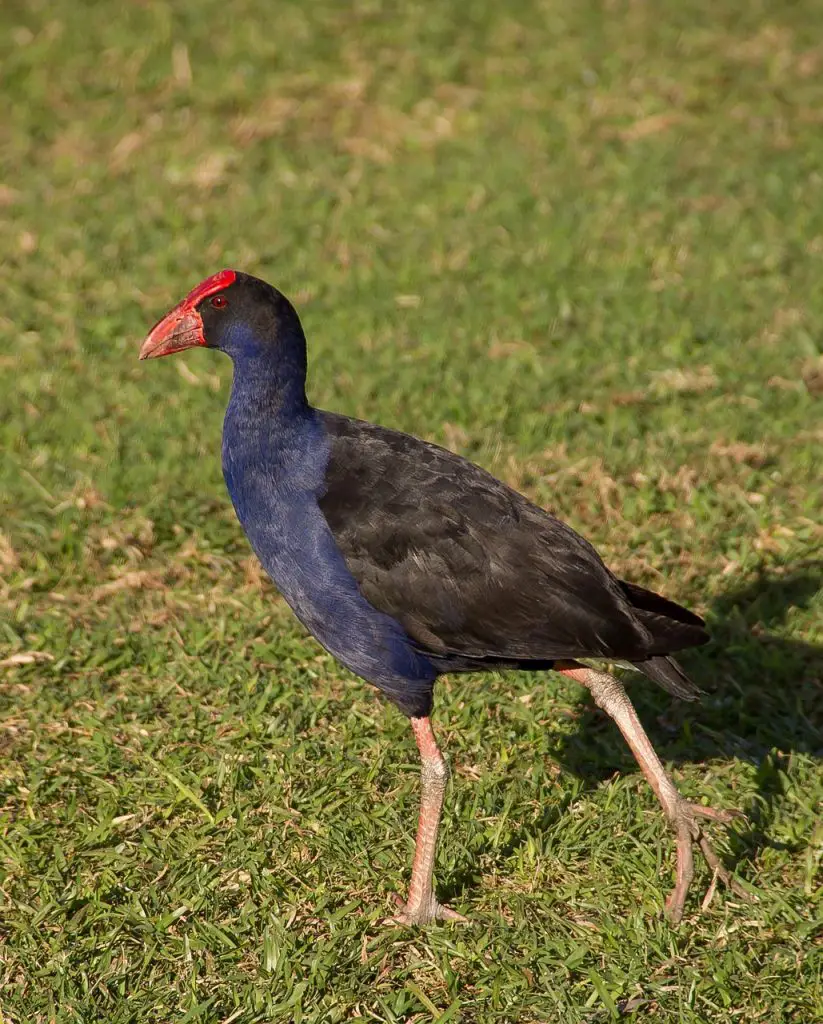
The Purple Swamphen (Porphyrio porphyrio) is a stunning bird species with vivid and diverse plumage, which includes shades of purple, blue, and red. Their omnivorous diet and adaptability to various aquatic environments make them a key component of wetland ecosystems.
Violet Sea Snail
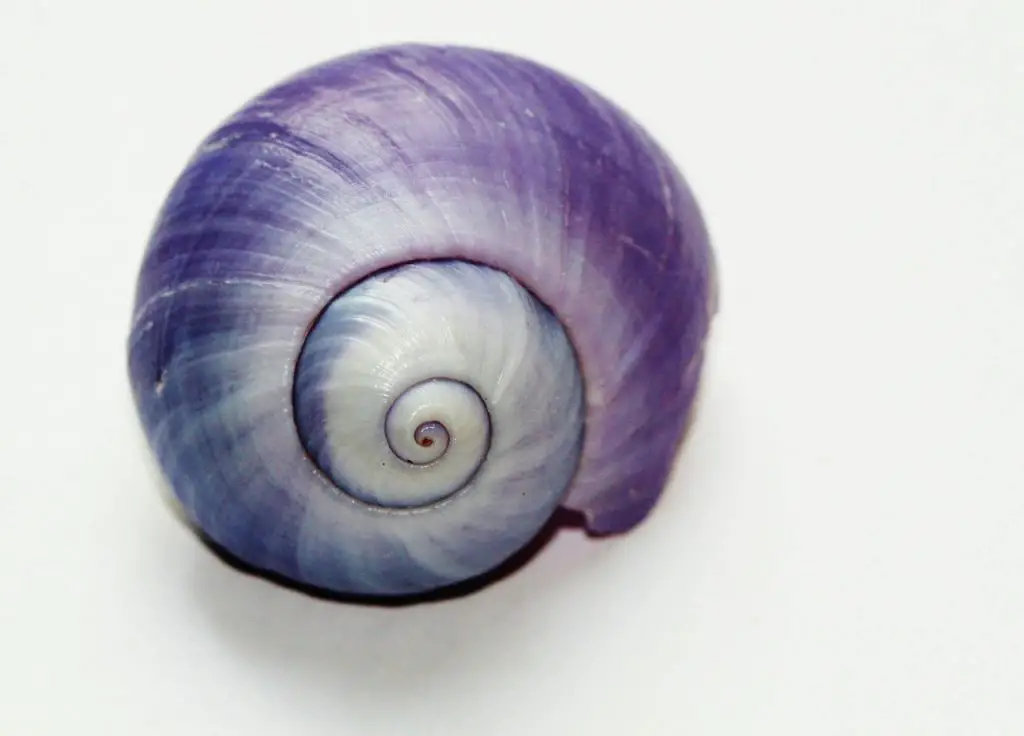
The Violet Sea Snail (Janthina janthina) is a marine mollusk that graces the open oceans with its distinctive violet hue. Despite its name, the snail’s violet coloration is not an inherent feature but rather a result of pigments ingested from its primary food source, the Portuguese Man o’ War. The snail secretes a violet-hued mucus, creating an external shell that protects it and contributes to its stunning appearance.
These sea snails have a remarkable ability to float on the water’s surface using a bubble raft created from secretions. This adaptation allows them to navigate vast expanses of open ocean.
Purple Starling
The Purple Starling (Lamprotornis purpureus) is a resplendent bird species that graces the African continent with its vibrant plumage. Contrary to its name, the bird’s captivating colors range from metallic purples and blues to iridescent greens. The unique pigments responsible for these hues are derived from the bird’s diet, particularly the consumption of fruits and insects containing carotenoids.
Orchid Mantis
The Orchid Mantis (Hymenopus coronatus) boasts a slender body with delicate appendages, resembling flower petals. The mantis mimics the appearance of orchids not only in color but also in posture, enhancing its mimicry to deceive unsuspecting prey.
The Orchid Mantis exhibits various colors, including shades of white, pink, and even purple.
Purple Grenadier
The Purple Grenadier, scientifically known as Uraeginthus ianthinogaster, is a dazzling bird species hailing from sub-Saharan Africa. Despite its name, this avian beauty doesn’t exhibit a prominent purple hue but rather showcases an array of vibrant colors, including shades of blue, green, and red. The striking red coloration on its belly and vent is a result of carotenoid pigments obtained through its diet, predominantly consisting of fruits and seeds.
Physically, the Purple Grenadier is a small finch characterized by its compact build and colorful plumage. Males typically display more vivid colors than females, especially during the breeding season.
Purple Honeycreeper
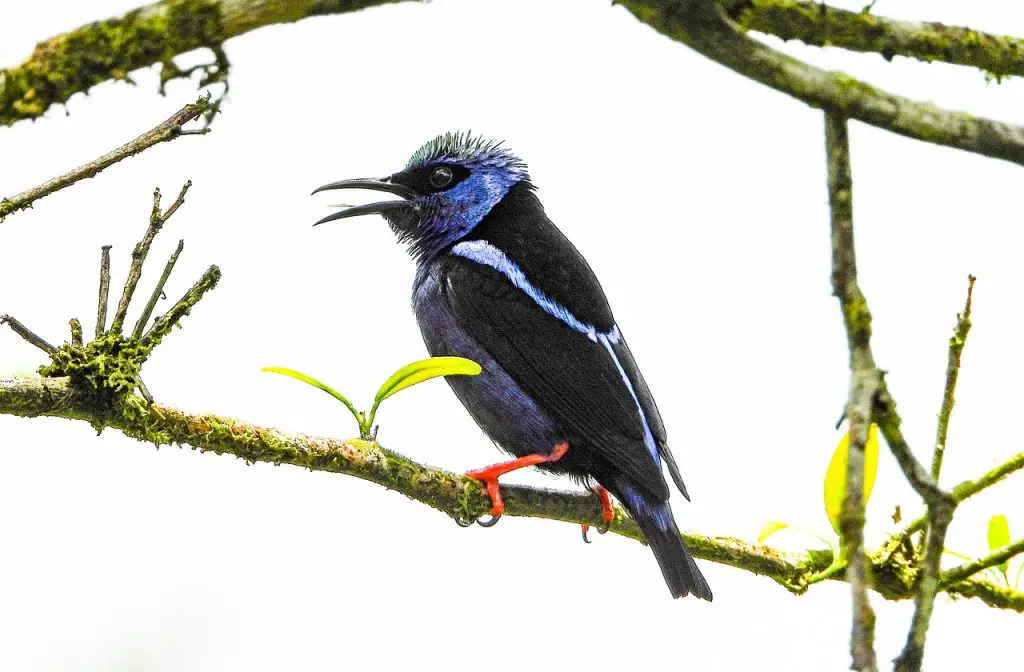
The Purple Honeycreeper, scientifically known as Cyanerpes caeruleus, is small passerine bird that showcases a vibrant combination of purple and blue plumage, with the males displaying more intense colors than females. The dazzling red coloration on its legs and bill is attributed to carotenoid pigments acquired through its diet, primarily consisting of fruits and nectar.
The birds use their unique bills to extract nectar from flowers and consuming a variety of fruits.
Ochre Sea Star
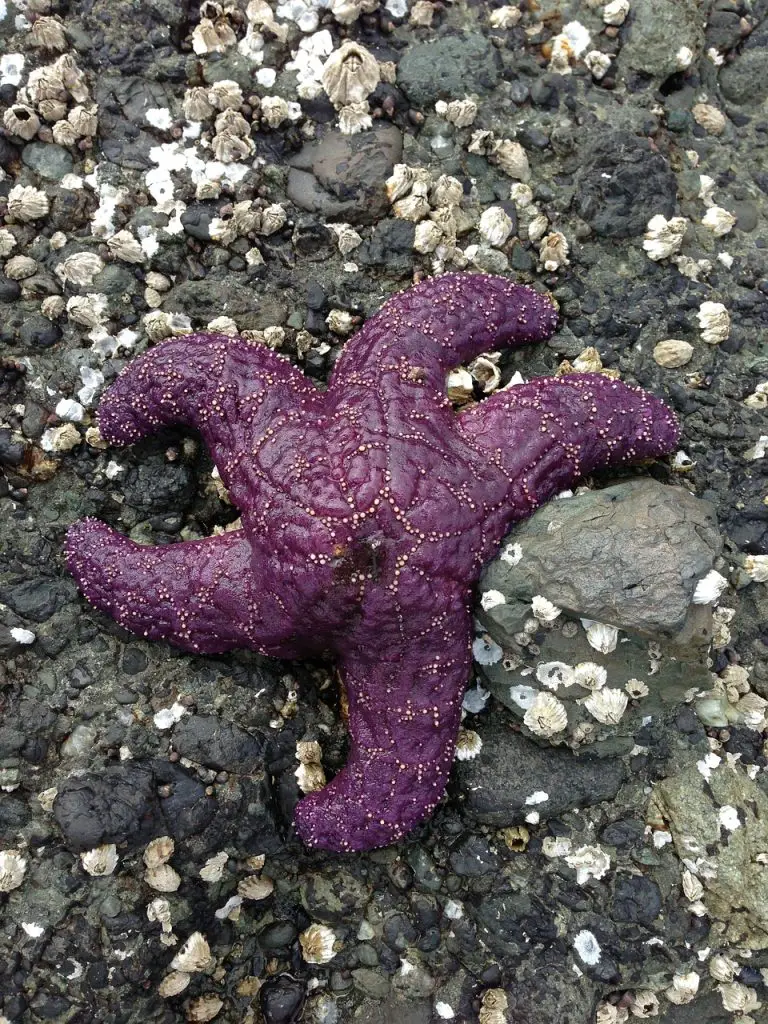
The Ochre Sea Star, scientifically known as Pisaster ochraceus, is a marine species inhabiting the rocky shores of the Pacific Ocean. Despite its common name, these sea stars can exhibit a range of colors, including various shades of purple, orange, and red.
The sea stars are voracious predators of mussels, helping to maintain biodiversity by preventing the dominance of single species in rocky intertidal habitats.
Violet-Crowned Woodnymph
The Violet-crowned Woodnymph (Thalurania colombica) is a hummingbird species. It lives in the tropical and subtropical regions of Central and South America. Renowned for its stunning plumage, this woodnymph exhibits vibrant violet and green feathers, with a striking violet crown on its head.
Magnificent Sea Anemone
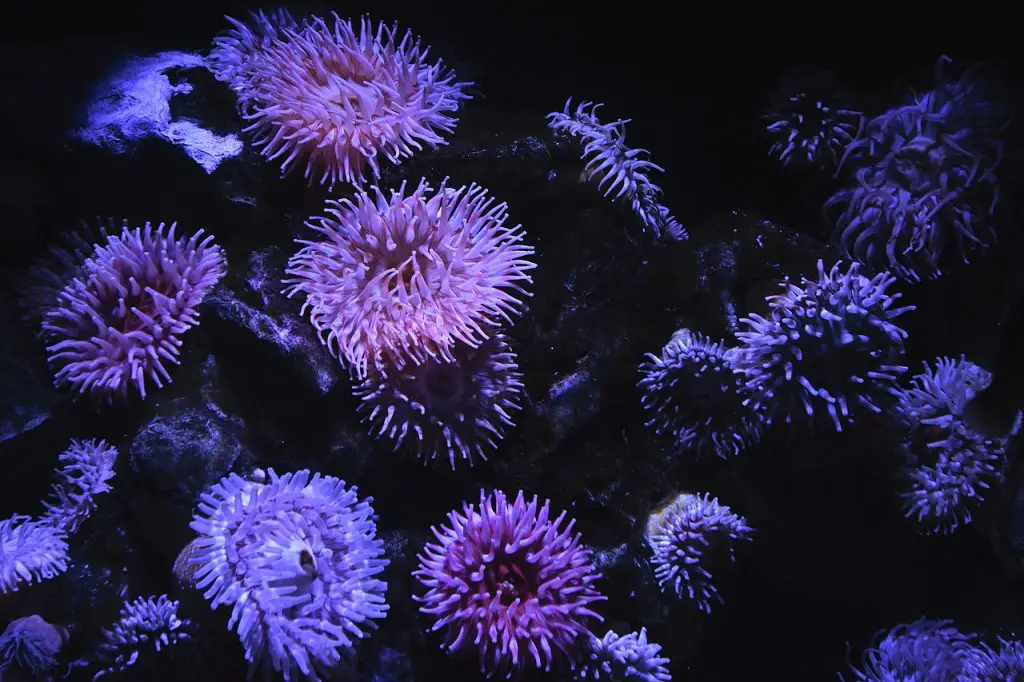
The Magnificent Sea Anemone (Heteractis magnifica) adds a splash of vibrant colors to coral reef ecosystems. Despite the common association with the color purple, these sea anemones can display a range of hues, including shades of red, pink, and purple.
The Magnificent Sea Anemone boasts long, flowing tentacles adorned with small, bead-like structures known as acrorhagi. These tentacles house specialized cells called cnidocytes, equipped with stinging nematocysts used for capturing prey and defending against threats.
Sea anemones have a symbiotic relationship with certain clownfish species. The anemone provides protection, and the clownfish offer food scraps and protection from polyp-eating organisms.
Spanish Shawl
The Spanish Shawl (Flabellina iodinea) is a striking marine gastropod mollusk belonging to the nudibranch group. Renowned for its vibrant purple coloration, this sea slug obtains its striking hue from the presence of pigments in its tissues. These pigments serve not only as a visual spectacle but also act as a form of aposematism, warning potential predators of its unpalatability due to its ability to sequester toxins from its prey.
Purple Shore Crab
The Purple Shore Crab (Hemigrapsus nudus) is a crustacean that contributes a burst of color to intertidal zones along the Pacific coast. Contrary to its name, this crab can display a range of colors, including various shades of purple. The purple coloration is attributed to pigments in its carapace, which can intensify or fade depending on factors such as age, diet, and environmental conditions.
Twospined Angelfish
The Twospined Angelfish (Centropyge bispinosa) is a dazzling marine species that contributes a touch of purple brilliance to coral reefs. This angelfish showcases a captivating combination of purple, blue, and yellow hues. The distinct coloration is primarily serves as a form of camouflage among coral formations.
Twospined Angelfish are known for their intriguing behavior, forming monogamous pairs and demonstrating territoriality within their coral habitat.
Purple Martin
The Purple Martin (Progne subis) is a bird species that adds a splash of purple to the skies. The male Purple Martin displays a deep, iridescent purple plumage, especially during the breeding season.
Royal Gramma
The Royal Gramma, scientifically known as Gramma loreto, is a mesmerizing fish that graces coral reefs with its vibrant purple and yellow hues. The dominant coloration is a striking purple on the anterior portion of its body, transitioning to a golden yellow towards the posterior.
Royal Grammas exhibit territorial behavior, defending their chosen hiding spots within the intricate coral formations.
Costa’s Hummingbird
The Costa’s Hummingbird, scientifically known as Calypte costae, is a dazzling purple gem of the avian world. Males of this species have iridescent violet-purple plumage on their head and throat, creating a stunning contrast with the white chin and chest.
Costa’s Hummingbirds are small in size, measuring around 3 to 3.5 inches in length, with males displaying the characteristic purple coloring while females exhibit a more subdued greenish-gray plumage.
Purple Animals: Frequently Asked Questions
You have questions about purple animals. We have answers.
What sea animal is purple?
Several sea animals exhibit purple coloration, and one notable example is the purple sea urchin (Strongylocentrotus purpuratus). This marine invertebrate lives along the coasts of the eastern Pacific Ocean and has a spiny, purple-hued exoskeleton.
What mammal has purple fur?
Mammals generally do not have purple fur in the natural sense. But domesticated animals like cats and dogs may be artificially dyed or have fur that appears purplish due to environmental factors or lighting conditions. In the wild, natural fur colors of mammals typically range from browns and grays to reds and blacks.
